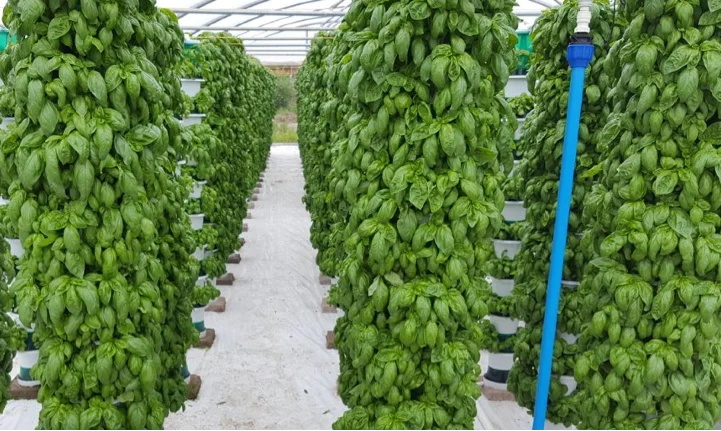Bioponics is an innovative method of cultivating plants without soil in a closed-loop system.
This approach is gaining attention due to its sustainability and several advantages over traditional agriculture.
In bioponic systems, nutrient sources from organic waste streams are utilized, contributing to local nutrient cycling.
The system harnesses the metabolic processes of microorganisms that release nutrients from organic matter.
To explore the potential of bioponics, a study was conducted using biogas digestate concentrate and biochar as nutrient sources. A biofilter was also incorporated to promote nutrient release from organic sources.
The researchers closely monitored water quality, plant growth, and quality throughout the experiment. They also investigated the effects of a fungal biocontrol agent called Trichoderma atrobrunneum and UV-C treatment of the nutrient solution on plant health and growth.
The study involved three cultivation cycles using Lactuca sativa (“HAWKING” Salanova®) in bioponic, hydroponic, and soil-based cultivation systems.
The findings of the study revealed that healthy lettuce can be successfully grown in bioponic systems using biogas digestate concentrate and biochar as nutrient sources, despite the accumulation of salts in the nutrient solution.
Analysis of plant sap showed that lettuce cultivated in bioponic systems had lower nitrate levels but higher ammonium and chloride content.
The yield of lettuce in the bioponic systems was intermediate compared to the hydroponic and soil-based systems.
The fungal biocontrol agent Trichoderma atrobrunneum, specifically the T. atrobrunneum strain T720, was found to survive and thrive in both soil and soilless cultivation systems.
Additionally, lettuce grown in the bioponic system with the application of Trichoderma showed significantly increased shoot height compared to the hydroponic and soil-based systems.
More To Discover
- New Tech From US Researchers Transform Dandelions and Shrubs Into High-Performance Rubber Tires
- Tiny Nuclear Battery Promises 50-Year Phone Charge, Breaking Radioactive Ground
- What’s Holding Back the Solar Revolution? The Lab-to-Market Gap
- Sustainable Furniture Foam of the Future Creates Seaweed-Filled Sofas
However, in the soil-based systems with Trichoderma application, higher chlorophyll and flavonoid content but lower shoot height were observed.
The fresh weight of lettuce roots was significantly higher in the hydroponic systems with Trichoderma treatment. Cultivating plants using organic waste streams requires commitment and experience from producers.
In bioponic systems, the inclusion of a biofilter within or external to the system can aid in converting ammonium-rich fertilizer into plant-available nutrients quickly.
Unlike conventional hydroponic systems, nutrients in bioponic systems are released slowly over time, necessitating careful monitoring and adjustments.
In conclusion, the study demonstrated that healthy lettuce suitable for human consumption can be grown in bioponic systems.
The application of the biocontrol agent, Trichoderma, had positive effects on plant growth.
However, it is important to note that bioponic systems require attention and expertise from producers.
Implementing a biofilter can enhance nutrient availability, but constant monitoring and adjustments are necessary due to the slow release of nutrients in these systems.
Overall, bioponics holds promise as an organic, closed-loop soilless cultivation system with potential benefits for sustainable food production.




















